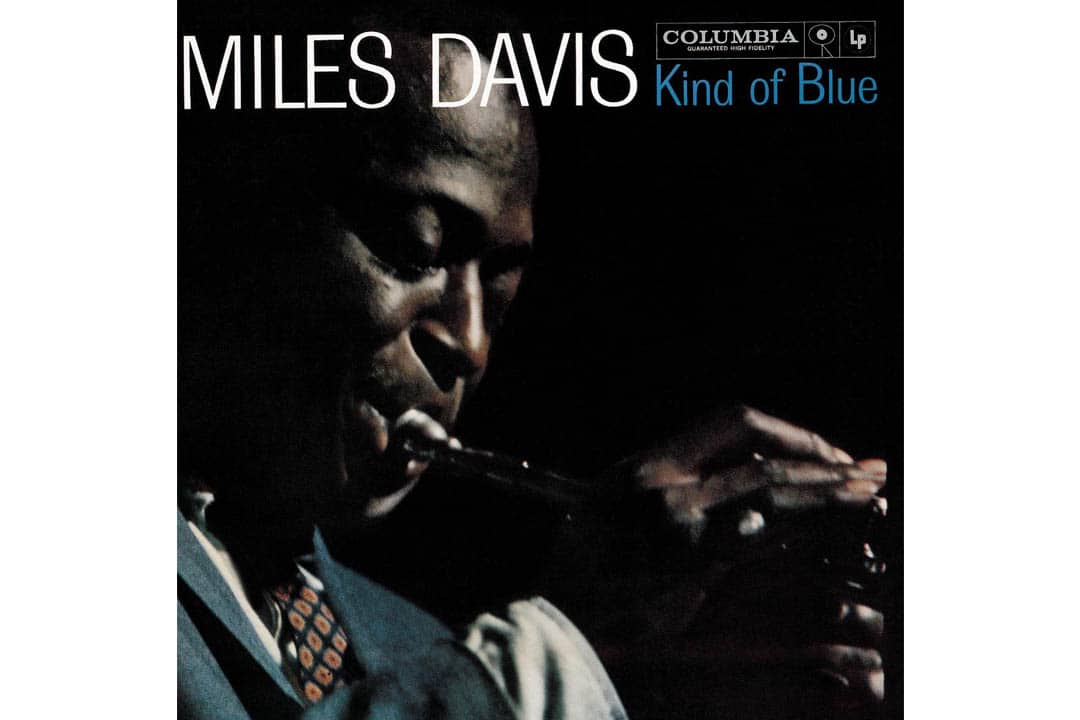What does one get when seven musical geniuses assemble and record an album at the wrong speed? You get a cornerstone of modern music: Kind of Blue.
In 1959, seven jazz giants gathered in a New York studio with only a philosophical jazz sketch in mind. Trumpet master Miles Davis captained the musical dream team, with Cannonball Adderley on alto sax, Bill Evans and Wynton Kelly playing piano, Paul Chambers providing the bass lines, and Jimmy Cobb on drums. The soon-to-be deified John Coltrane provided a tenor sax thread which, for many, put the finishing strokes on this quadruple platinum masterpiece Kind of Blue. Yes, quadruple platinum — it’s one of the best-selling jazz albums of all time.
The brilliance of the album is enhanced by the backstory of just how it was concieved. Davis only came up with the concept hours before the recording session. The group sketched some musical modes, with no obvious chord progressions, and then took turns leading the melodies in directions that resulted in sheer brilliance. What’s even more interesting is the fact that the first three tracks “So What,” “Freddie Freeloader,” and “Blue in Green” were accidentally recorded slower than they were played, resulting in a slightly faster playback. This error was fixed in the 90s, but it sheds light on what an anomaly the album is: a freak occurrence that contributed to an enigmatic work of artistry.
When you relax with your favourite mood-altering substance — I’d suggest a glass of red paired with a clean hybrid — to Davis’ cool trumpet lines, Coltrane’s seraphic tenor solo, and Evans’ finesse on “Blue in Green,” you will simply melt into the music.
Davis’ modal approach to composition is exercised in “Blue in Green,” where his trumpet and Evans’ piano sketch a string of ethereal scales and beautiful interpretations. No strict chord progressions here.
While listening, I have never ceased to be amazed by the fact that these geniuses were not playing from sheets. The result is — all at once — visionary, smooth, sad, and historically influential. It’s why the album’s title fits so perfectly; the music is kind of “blue.” It evokes smoldering sensuality, foot-tapping to the R&B bass lines, overarching melancholy, and an unrestricted joy. How is that possible? Listen carefully and your soul will agree.
For both music aficionados and jazz lovers, this album is a prolific touch point. But the contemporary music lover often overlooks this timeless work of genius. Yet if one listens to traditional hip hop, rap, R&B, and rock, they are sure to be listening to an artist that on one level or another has been influenced by Kind of Blue. This album is a true masterpiece and has revolutionized music since the first sound of Paul Chambers’ eerie baseline partnered with Evans’ virtuoso that preluded Davis’ trumpet on the introductory and most popular track “So What.”
Kind of Blue is touted as the greatest work of jazz, hands down. People of younger generations should never overlook the influence of this album. Don’t let the word “jazz” scare you. It is not elevator music; I’ll gladly pass on that cacophony style of “jazz” too.
Kind of Blue is timeless and relevant. The list of artists that openly shout their gratitude for its influence is as long as it is varied. Mos Def, Blonde Redhead, John Mayer, David Banner, Miho Hatori, the Allman Brothers Band, and Quincy Jones all cite the album as a major influence on their musical journey.
Pink Floyd keyboardist Richard Wright notes that the chord progressions on Kind of Blue can be heard throughout the band’s greatest selling album, Dark Side of the Moon. John Legend religiously played the album throughout college, and celebrates its incredible impact on his music.
With Kanye West, a frequent collaborator with John Legend, Kind of Blue is “Bound 2” appear. Even as you watch your favourite films, don’t be surprised if Kind of Blue echoes throughout the score. Robert De Niro’s A Bronx Tale, Clint Eastwood’s In the Line of Fire, and even the television series The Wire all borrowed from Kind of Blue.
Kind of Blue is as historic as it is sensational and timeless. It should not be overlooked by any generation that considers itself musically savvy. Listen to this album and it will open up a whole new language of music you may never have knowingly experienced. To immerse oneself in Kind of Blue is to be enlightened.


